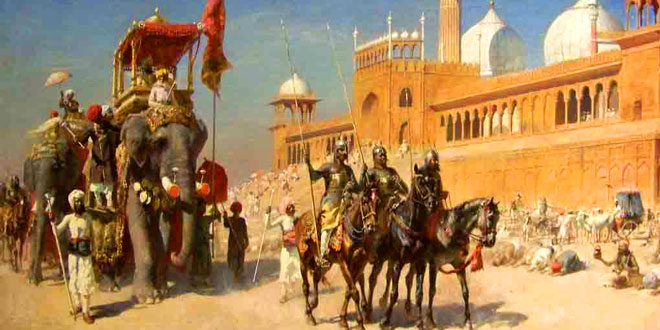Question: How did Haider Ali and Tipu Sultan make Mysore power fun?
- In the second half of the 18th country Haider Ali and his son, Tipu Sultan made Mysore very powerful.
- Tipu was known as the Tiger of Mysore.
- Both Haider Ali and Tipu modernized the army and introduced new and efficient weapons.
- With the help of the French, Haider Ali established a modern arsenal at Dindigul.
- Tipu Sultan even made efforts to build a modern nay.
Question: Write any three conditions that Shivaji agreed to by the Treaty of Purandhar.
Answer: The three conditions to which Shivaji agreed –
- to accept Aurangzeb as his overlord and pay him an annual tribute.
- to surrender 23 forts to Aurangzeb.
- to meet Aurangzeb at his court.
Question: Under which Peshwa was the Maratha power at it greatest? Why do you think so?
Answer: Under Balaji Baji Rao the Maratha power was at it greatest because he shifted the capital from Satara to Poona. During his reign, the Maratha armies reached as far as Punjab and Rajasthan in the north and Bengal and Odisha in the east. The kingdoms of Mysore and Hyderabad were forced to hand over territories and pay tribute.
Question: Discuss the role of Shivaji’s in establishing and strengthening the Maratha Empire.
Answer: The role of Shivaji in establishing and strengthening the Maratha Empire is as follows:
- The man who carved out a powerful kingdom in the Konkan region was Shivaji.
- The Marathas became will – organized under the leadership of Shivaji.
- Shivaji dreamt of establishing a large empire. While still young, he put together a small army. Using guerrilla warfare, He capture many forts near Puna.
- The growing power of Shivaji alarmed the king of Bijapur. He sent an army under Afzal Khan to crush the Marathas. Shivaji killed Afzal Khan and defeated the Bijapuri army.
Question: Write short notes on – Sawai Raja Jai Singh, Sikh misls, The Ashtapradhan.
Answer:
(i) Sawai Raja Jai Singh: The most enlightened. Rajput ruler of this period was Sawai Raja Jai Singh of Amber. He encouraged the teaching and learning of science. Sawai Raja Jai Singh founded the city of Jaipur and made it his capital. He was ako interested in astronomy and built many observatories.
(ii) Sikh misls: In the second half of the 18th century the Sikhs formed 12 political groups called misls. Each misl controlled a specific area and had a leader. Towards the end of the 18th century, Maharaja Ranjit singh, the leader of the Sukerchika misl united all the misls. He established a power kingdom in Punjab.
(iii) The Ashtapradhan: Shivaji had a council of eight ministers, called the ashtapradhan to advise him. The words comes from Sanskrit and means important eight. These were:
- Dandadhyaksha (religious matters)
- Peshwa (head of coundil and general administration)
- Senapati (commander-in-chif of the army)
- Nyayadhish (justice)
- Amatya or Majumdar (finance)
- Pant Sachiv (general secretary)
- Sumanta (foreign affairs)
- Mantri (head of intelligence)
Question: What were the offices held by Saadat Khan?
Answer: Saadat Khan held the combined offices of subedari, diwani and faujdari. In fact, he was responsible for managing the political, financial and military affairs of the province of Awadh.
 Class Notes NCERT Solutions for CBSE Students
Class Notes NCERT Solutions for CBSE Students


